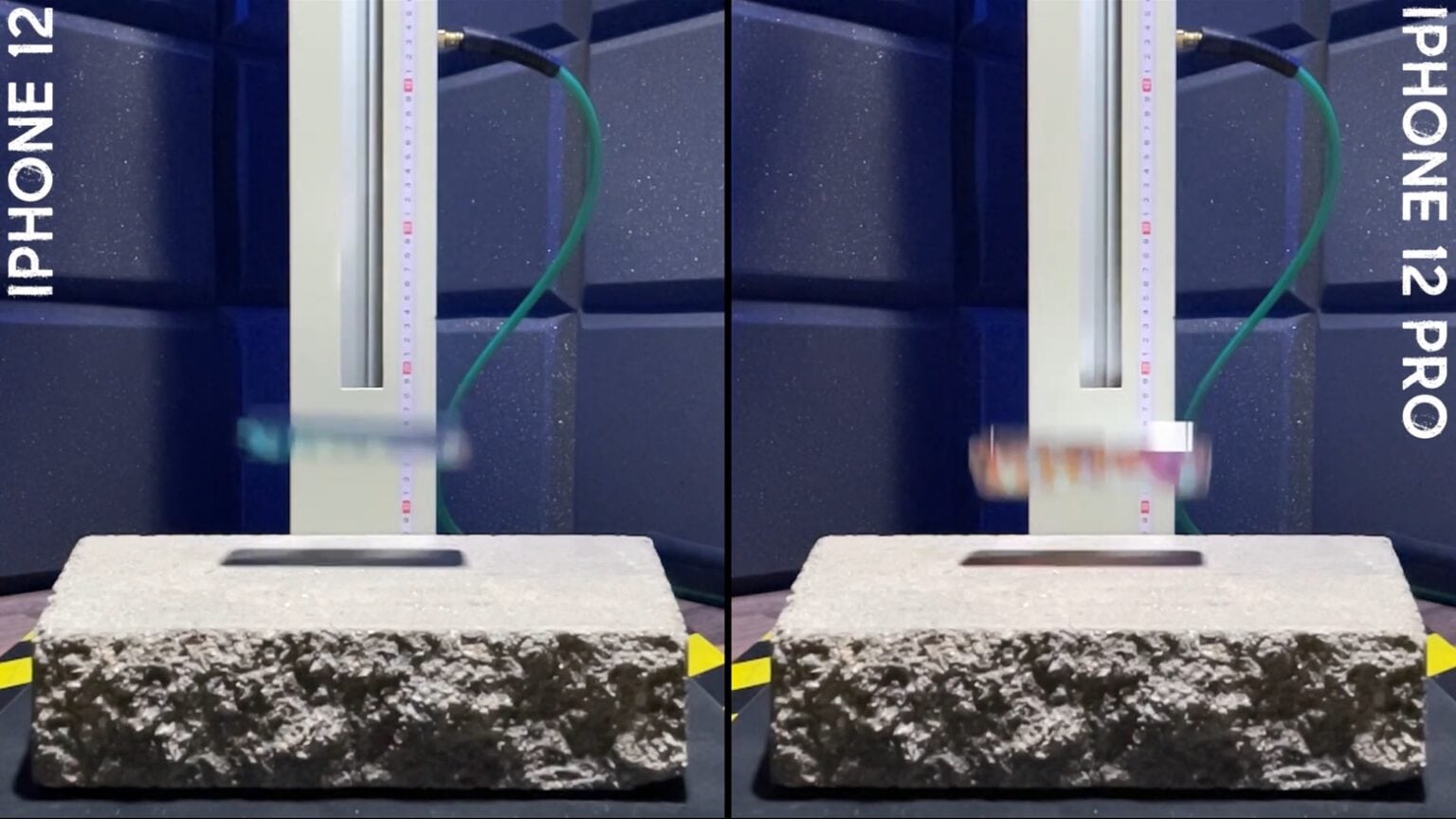A new type of screen protection built into the iPhone 12 series helped it survive a brutal drop test better than its predecessor. Both the standard model and the Pro went through multiple drops directly onto the display without breaking.
That wasn’t the case when the identical test was done on the iPhone 11 Pro Max in 2019. But that model older doesn’t have Ceramic Shield.
The iPhone 12 series puts its OLED display behind a layer made of this new material. “The Ceramic Shield front cover, which goes beyond glass by adding a new high temperature crystallization step that grows nano-ceramic crystals within the glass matrix, increases drop performance by 4x,” promises Apple.
iPhone 12 and iPhone 12 Pro drop test
The YouTube channel PhoneBuff really challenged this new material. It did a drop test of both a standard iPhone 12 and an iPhone 12 Pro. The handsets were allowed to fall repeatedly from different heights. Over and over. Directly onto their displays.
The first test was a drop of 1 meter (3.3 feet) onto a concrete block. As both iOS devices survived, the next test was a drop of 1.45 meters (4.8 feet) onto steel. And this was repeated 10 times. After this grueling test, the Ceramic Shield covers on both the iPhone 12 standard and Pro remained crack-free. Then, in a final test, the devices were allowed to fall 1.45 meters onto a rough cement block. Again, the screens came through unbroken.
For comparison, the display in the iPhone 11 Pro Max cracked in the first 1-meter drop test.
Watch the full PhoneBuff video to see all the action:
iPhone 12: ‘Not indestructible’
Allstate Protection Plans did its own iPhone 12 drop test on Apple’s latest. It dropped both new models 6 feet onto a cement sidewalk. This resulted in small cracks to the edges of the iPhone 12. But the iPhone 12 Pro‘s Ceramic Shield shattered.
“The iPhone 12 is the most durable smartphone we’ve ever tested,” said Allstate. “It’s Ceramic Shield screen is a leap forward for durability, though not indestructible. It’s flat side design may also improve durability.“
In the PhoneBuff torture session, both 2020 iPhone models sustained some damage. It just wasn’t to the display.
The frame on these handsets sits flush with the front of the screens, and it was scuffed by the face-down impact with cement. “There’s some scuffing right along the edges of each, which while not necessarily pretty no doubt helped protect the glass,” said PhoneBuff.
When the handsets were dropped 1 meter with their corners striking a concrete block, the frames were scuffed.
And when dropped the same distance onto their backs, the rear glass on the standard iPhone 12 shattered. The Pro’s rear glass did not. This back panel isn’t made of Ceramic Shield.
Two takeaways from this test are that the displays in the 2020 iPhones are much harder to break than their predecessors. And Ceramic Shield should be used on the back of the 2021 models.
On the other hand, some early reports claim the iPhone 12 gets scratched more easily than it ought to.


